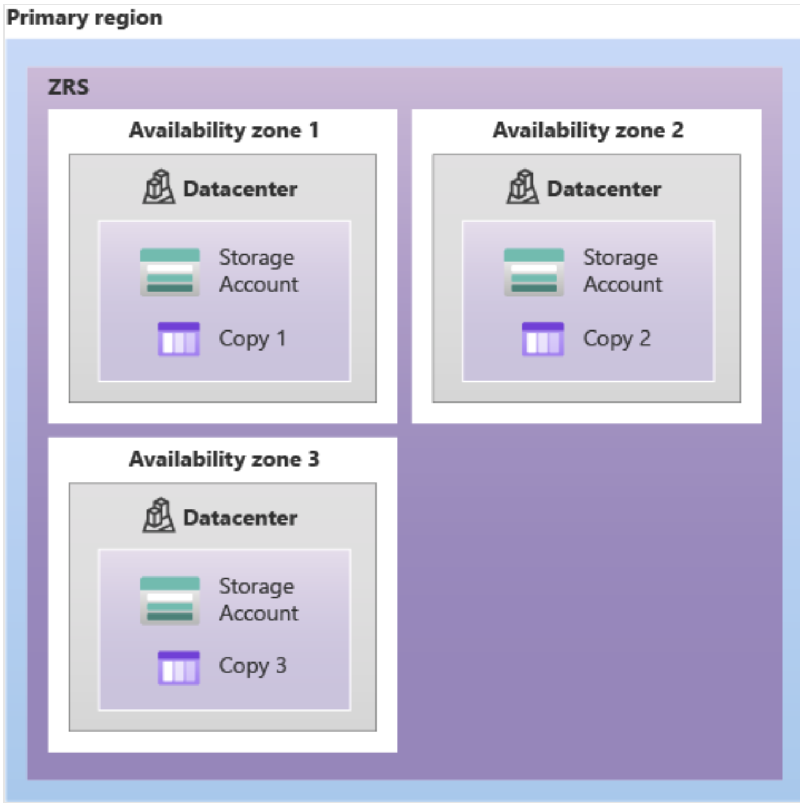Hello @ZM ,
it really depends on the level of resiliency you're looking for.
Here's a good article that explains storage replication in azure, that might help you find out what's your scenario:
Azure Storage Replication Explained
This browser is no longer supported.
Upgrade to Microsoft Edge to take advantage of the latest features, security updates, and technical support.
im thinking about switching from GRS to either ZRS/LRS - Both appear to have 99.9% for write, and 99.9% for read.
I need to find a better way of dealing with such large customers. The file share can be greater then 10TB in size.
but I’m not sure which way to go and wanted to ask:
• what some of the things are i should be aware suggestions/reservations?
• what are the biggest advantages/disadvantages of ZRS & LRS?
Finally what do you recommend I should go with ZRS/LRS? open to suggetions

Hello @ZM ,
it really depends on the level of resiliency you're looking for.
Here's a good article that explains storage replication in azure, that might help you find out what's your scenario:
Azure Storage Replication Explained

Hello @ZM
In addition to what RafaelDaRocha suggested, I would like to add some details that might help you in picking up the storage. Users look at these high-level data redundant options when the data availability is at most priority.
Redundancy of data is certainly a very important factor and should not be disregarded. But in order to make an informed decision of the type to choose, other factors must also be considered. In addition to redundancy, geography, costs and, of course, performance, the service level agreement (SLA) is also a decisive factor, as is the case with all offerings that are purchased as a service. Depending on which storage type is selected (Cool and Hot), Microsoft grants a different SLA for the underlying storage account.
ZRS 99,9999999999 % (12 -9's)
GRS 99,99999999999999 % (16 9's)
ZRS:
This significantly increases safety. If a single physical location (zone) experiences a total failure and another zone in the same region remains undamaged, data availability is still guaranteed. However, if the entire region (e.g. Switzerland North) experiences a total failure, even zone-redundant storage does not protect against loss.

GRS:
If the zone-redundant storage is not sufficient for the requirements, the geo redundant storage (GRS) is available as a further option. With this option, Azure itself breaks down the region boundary and accesses another region in which Microsoft stores the data again. As a result, the data is synchronously available three times in a zone of the primary region, as is the case with LRS. In addition, however, an asynchronous copy of the data finds its way into a single zone of the second (secondary) region, thus providing increased protection.

Hope this helps!
Please "Accept as Answer" and Upvote if the answer provided is useful, so that you can help others in the community looking for remediation for similar issues.